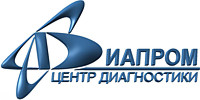
JSC "STCD"
Diagnostics CenterE-mail:

Address: office 329, Gazgoldernaya st. 14, Moscow 109518
Telephone/Fax: (495) 690-9195


Life Cycle Process1. Tasks
The state-of-the-art requirements management system involves not only processes, regulations, procedures and guidelines but a sophisticated IT-solution consisting of several components: the requirements management systems of the companies that implement the Project (WWER-TOI General designer requirements management system and reactor system Chief designer requirements management system) and requirements management systems of the Customer. The requirements management system of the Customer incorporates the requirements to the whole project and provides an opportunity to proceed from the requirements to the engineering solutions (3D-models, design documentation), accommodated in the design and engineering systems of the key companies involved in the Project implementation. This opportunity of proceeding from the requirements to the documents is used by experts at the stage of verification of requirements contained in the Requirements specification. The verification results are accommodated by the Customer’s requirements management system. 2. Proposed Development Patterns of the Department2.1. Management of Non-Conformities throughout NPP Life CycleThe processing of requirements turns out to be a broader-spectrum activity than mere work assessment against the Requirements specifications. For example, design documentation contains requirements, too. These are requirements to the equipment i.e. basic specifications; requirements to construction planning; requirements to start-up and commissioning etc. The compliance with such requirements is checked at different moments of time for different processes such as: purchasing, supply, transfer for installation, work acceptance, equipment performance and operation mode check etc. The detected deviations help to identify non-conformities. Accounting, registration, elimination and growth of non-conformities depending on their impact on NPP safety constitute the topical area of non-conformity management. 2.2. Linguistic Analysis of Text Aimed to Enhance Speed and Quality of Design Documentation CheckOne of the biggest problems of design documentation acceptance is a large volume of materials and a limited timeframe for their check. Use of IT-technologies to develop the documentation enables automatic comparison of the information received from various parent documents. For this purpose our team has created a tool for linguistic analysis of textual documentation in order to identify the characteristics of systems and equipment in it. The isolated characteristics are compared with analogous characteristics derived from other documents resulting in the end-to-end analysis of design documentation inner coherence and/or coherence with the customer requirements. The analysis findings are represented on the portal based on SemanticWeb technology. Use of such a tool will enable tracking down discrepancies in the documentation, including that received from different customers, with a high quality and within limited timeframes. 3. ProspectsSubject to the task of studying and implementing innovation technologies and developing high-potential business dimensions, our team has implemented several pilot projects of using semantic technologies to solve the following tasks:
Reference data: Semantic technologies (SemanticWeb) represent a new generation of internet development (i.e. Web-3.0), based on the description logic language, the ontology developed on the basis of the description logic language and new methods of data storage and binding. |